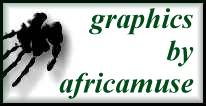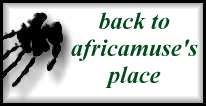
SISTERS IN PERU
When my sisters, niece and I converged on Jorge Chávez International Airport in Lima, Peru, it was the first time we had been together in six years. Our once-close family had scattered around the world to live in New Zealand, Australia, England, Chile, Ireland and various cities in our native South Africa.
Jenny, Tassin and niece Lee-Ann had bravely agreed to join me in a rite of passage of my choosing. In the year that celebrated their 44th, 40th and 21st birthdays, and my 30th, we planned to walk the 39-kilometre section of the Inca Trail that leads through the Andes to the fabulous ruins of Machu Picchu.
High adventure? For us, yes. Never having been an 'outdoorsy' family, the four-day hike in the Andes would be a physical, mental and - as it turned out - emotional challenge for us all.
As the youngest of six siblings, I found myself in an unfamiliar leadership role. As the only one with a working knowledge of Spanish, I was translator, tracker, plans-maker, place-finder and rather-halting communicator.
These roles, exhausting but not unwelcome, were thrust upon me almost immediately. On arriving at our Lima hotel at 3 a.m., my jetlagged sisters stumbled wearily into the building while I thanked the taxi-driver. Moments later they tumbled out! "Sally, we need you! We need your Spanish! The woman wants to know what time we want breakfast!" I was dumbfounded. "How do you know?" With much hilarity, they tiredly realised the hotel clerk had been speaking English all along!
The following night my intervention was again necessary, as they attempted to order a room-service supper off the laundry list! By the time we left Peru, however, they were deciphering Spanish menus and ordering food politely - not bad for people who had never before had to grapple with day-to-day communication in a foreign language!
My niece and I have a passionate, professional interest in culture, history and pre-history, and we all shared an eagerness for travel and exploration. The mere act of catching a bus in Lima's heart-stopping traffic was exhilarating! Our eyes feasted on huge, juicy pineapples cut and sold at the roadside, off-limits to our sensitive gringa stomachs. A spontaneous search for pancakes led to a happy, hours-long and footsore expedition through the streets of the capital. A dinner with Peruvian friends turned into a night of dancing and sampling of the sweet-sour Peruvian 'national drink', the potent pisco sour. An outing to Pachacamac, about 30 kilometres south of Lima, became two adventures - the exploration of this fascinating, millennia-old cultural site and the finding of the bus to get there!
Dilapidated Lima is charmingly beautiful, the friendliness of the Limeños remarkable (although we heeded warnings that petty street crime is widespread). But this was merely the first stage of our journey, and soon we were jetting southeastward to the Inca capital, Cuzco, high in the Peruvian Andes.
With a current population of approximately 300,000, Cuzco is reputed to be the oldest continuously inhabited city in South America. It takes its name from the word qosq'o, meaning "the navel of the Earth" in the indigenous language, Quechua. Here we were able to explore both the colonial Spanish city of the conquistadors and the plentiful remaining evidence of Inca civilisation. It is in Cuzco that the ancient Inca Trail begins, branching out to network through present-day Peru, Ecuador, Bolivia, Argentina and Chile.
We stayed at the comfortable and reasonably priced Los Niños Hotel, just ten minutes walk from the centre of Cuzco. This hotel was established to support an impressive array of interventions for the benefit of impoverished, abused and homeless local children. Visiting these projects, and chatting with children and staff, we glimpsed a side of present-day Cuzco few tourists see.
Cuzco is at 3,326 metres above sea level, and I was the first to be struck down by the dreaded altitude sickness. My breathing was laboured, my limbs shaking and my pulse racing. I had done my homework, but the descriptions of symptoms had not done justice to the explosive headaches and extreme weakness. I took to bed and arose only for brief periods over the next day and a half.
In the depths of the second night, Tassin, a nurse, interrupted a check of my pulse rate with, "I think I'm going to be sick," followed by copious and repeated vomiting. By the day of the trek, however, Tassin and I were fully recovered. Neither Jenny nor Lee-Ann had experienced any serious symptoms, although both had felt breathless and easily fatigued. As part of our acclimatisation regimen, we had undertaken an easy day-hike around the various ruin sites outside Cuzco. We were all confident that we could manage the Trail.
At the 5 a.m. sounding of the alarm clock, my waking thought, spoken aloud in our shared bedroom, was, "It's time, girls!" Jenny, thinking of her extensive preparation leading to this moment, exclaimed, "Eleven months!" Tassin muttered, "I think I'll wait for you here."
Our chartered bus pulled up at a patch of ground between road and railway marked by a cluster of vendors selling bottled water, hats and walking sticks. This was Km 82, one of a number of points where one can join the Inca Trail. We shouldered our backpacks and set off in good cheer - although I did welcome our guide, Gary, holding my hand as I nervously crossed the swaying bridge high above the rushing Urubamba River.
Soon, however, Jenny began to experience difficulties. The eldest of us, she had put the most effort into physical and mental preparation for the Trail, but by lunchtime she was in serious trouble. Her skin had a yellow tinge, and she reported that a thick yellow 'veil' had obscured her vision. Her pulse rate would not go below 135 at rest, despite her being given oxygen from the heavy canister carried by Hubert, our second guide. In great distress, and despite her wish not to disrupt our shared adventure, she could not continue. Tassin, Lee-Ann and I gathered to make one agonising decision after another: first, to split our group up. And second, that Jenny needed a Spanish-speaker far more than she needed a nurse. Tassin and Lee-Ann, mother and daughter, continued the hike - Jenny and I turned back.
Here our well-researched decision to choose SAS Travel as our tour company bore fruit. Gary shouldered Jenny�s pack and we retraced our steps to Km 82. Jenny found the downhill walking easier and we made good time. Although she was much recovered, we never doubted our decision to retreat. The Trail was to become significantly more taxing, with the most difficult point, the aptly named Dead Woman's Pass (Warmiwañusca) at 4,198 m, to be reached the following day.
My chief concern was now to get Jenny safely back to Cuzco, almost 100 kilometres away by mountainous road. Our chartered bus had long-since departed, as had the many hikers and almost all of the vendors. Km 82 was once again just an isolated patch in the bright afternoon sunshine.
With a shout, Gary sighted a local bus from afar and left us at a run. We followed as rapidly as we could, I supporting Jenny's shaky legs and she holding my hand over the now-deserted bridge, the roar of the river more ominous in the surrounding silence.
It was a slow, slow ride to the village of Ollantaytambo, en route to Cuzco. It was made slower still by the inquisitive mind of the bus driver's son, a curious boy of about four years, who demanded frequent stops to look at a passing train, a river or some other item of interest.
About a dozen passengers, we were soon communicating with stilted words but easy camaraderie. Two gringas heading back from Km 82 were an unusual sight, and there was great concern for Jenny's well-being. I joked about lightening my pack as I distributed energy bars - and cringed at the flash of sunlight on foil as the first wrapper went out the window.
In Ollantaytambo, we switched to a beat-up old taxi. This drive was more of an adventure than any we had so far experienced in Peru. Jenny and I gripped the edges of our seats as our laughing Japanese taxi driver, seemingly oblivious to cows in the road and other hazards, hurtled along mountain passes - all the while listening to loud Brazilian music and attempting to teach me phrases in Quechua.
Night had fallen by the time we arrived in Cuzco, and we headed straight for the hotel we had so optimistically left in the dark of that morning. To our great relief, Los Niños had one tiny room available. Despite our disappointment at not being on the Trail, we treasured the luxury of the hot showers and our shared double bed's cool, smooth sheets, knowing that Tassin and Lee-Ann were roughing it. Heading back to our bedroom from the spotlessly clean communal bathroom, I noted, "We don't have to crap in a hole." A pause while we remembered the anti-diarrhoeal medication we had sneaked that morning, finicky at the prospect of defecating in the 'wild', then we looked at each other and exclaimed, "We don't have to crap at all!"
After a day of rest, Jenny and I set off on an alternative route to Machu Picchu - the train that zigzags steeply through the mountains from Cuzco to Aguas Calientes, where we stayed overnight. The name of this small town, built around natural hot springs, literally means "hot waters" and the public bathing facilities were filled with travellers sipping pisco sours. We noticed, however, that only the most Scandinavian-looking men alternated luxuriating in the hot mineral baths with brisk dips in the pool of water diverted from an icy river descending from the glacial Andean heights.
I was on a knife-edge of anticipation as we rose to catch the very first bus to wind its way up the steep mountain road to Machu Picchu, the remote Inca settlement never tainted by Spanish conquest. Unknown to any but a few Andean peasants until its 1911 rediscovery by United States explorer Hiram Bingham, it is now arguably the most well-known archaeological site in Latin America.
I have read extensively about the ruins and viewed hundreds of photographs, and I had wondered whether this exposure would result in disappointment, a sense of anticlimax. But my worry was unfounded: the visual and emotional impact of the ruins was overwhelming.
Our joyous reunion with a very worried, dirty and tired Tassin and Lee-Ann took place on the last stretch of the Inca Trail, amongst grazing llamas and alpacas. We had had no contact since Jenny and I had turned back, and their relief that we were safe and healthy was surpassed only by their gratitude for the clean, dry "I survived Dead Woman's Pass" T-shirts we had brought for them. After a guided tour, we separated to experience the wonders of the ruins at our own pace. For two days I wandered through the city's buildings and pathways by day and, memorably, by moonlight. I sat in contemplation on the magnificent grassed terraces, climbed worn, narrow steps to the peak of Huayna Picchu, and spent two hours retracing the last section of the Inca Trail back to Intipunku, the Sun Gate, to catch the dawn.
I didn't get to fulfil my dream of walking through the mountains to Machu Picchu, but the rite of passage was intact. Turning thirty, for me, marked a new phase in my relationship with my sisters, a stronger bond that has not been weakened by my continued migrations around the world. And, not content with having walked the first and last steps of the path, I will return.
TRAVELLERS' TIPS
- Consult a doctor about your potential medication needs on the Trail and about the advisability of testing your reaction to unfamiliar medications before you leave. Avoid taking aspirin at high altitude as this could lead to haemorrhaging. Although neither Lima nor Cuzco is in a yellow fever area, you may need a valid yellow fever vaccination certificate to transit through certain countries on your return.
- Transport (including internal airfares), accommodation, food and drink, trail fees, souvenirs and excursions cost less than US $1,000 per person during our sixteen-day trip. Both cheaper and more luxurious options are available.
- Machu Picchu can be reached by foot, helicopter, or train and bus. Hikers must be fit enough to walk up to 14 kilometres per day on mountain trails, while carrying a backpack with camera, water, and clothes (food and camping equipment are usually carried by porters). Avoid the wettest season (January to April). Allow yourself about four days to acclimatise in Cuzco before starting the Trail.
- Hotels: Las Camelias (Lima) tel: (00511) 4336029 www.hostallascamelias.com.pe; Los Niños (Cuzco) tel: (005184) 231424 www.ninoshotel.com; Machu Picchu Sanctuary Lodge (Machu Picchu - a more expensive option but the only hotel at the site itself) tel: (005184) 241777 www.monasterio.orient-express.com. Presenting your non-Peruvian passport and tourist card entitles you to a hefty VAT exemption at hotels.
- For information about the Trail, see http://www.raingod.com/angus/Gallery/Photos/SouthAmerica/Peru/IncaTrail or the SAS Travel website at http://www.sastravelperu.com/english/inkatrail.html tel: (005184) 255205.
On 5 May 2006, a version of this article was published in Friday magazine, a glossy, weekly supplement to Gulf News newspaper in the United Arab Emirates. Unfortunately, the writing was somewhat butchered by the editors - and the corny titles and subtitles they chose don't bear thinking about! Still, for the record, here it is
To read about my first visit to Peru, enter here.
Useful Links:
Useful Books from Amazon.com:

|

|
Quick travel:


|

|

|

all original material (text, graphics, photographs and programming) 1999-2006
Sally Smith
http://geocities.datacellar.net/africamuse